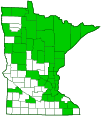Aspen Bracket
(Phellinus tremulae)
Conservation • Description • Habitat • Ecology • Distribution • Taxonomy
|
|
||||||||||||||
Description |
Aspen Bracket is a common, easily recognized, hoof fungus. It occurs in Europe, Asia, and North America. In the United States it occurs in the east from Maine to Massachusetts, west to Minnesota and Iowa. In the west it occurs from the Rocky Mountains to the West Coast. There are only a few records from the Great Plains and the southeast. It also occurs across southern Canada. It is common in Minnesota. It grows only on quaking aspen and bigtooth aspen, and it is the only hoof fungus found on those trees. It causes white trunk rot, turning the wood into a soft, white, spongy mass. The fruiting body (conk) begins in a large, horizontal, pore-like opening (lenticel) in young bark. When it first appears, it is convex and semi-circular or fan-shaped. The upper surface is brown to dark brown, paler toward the edges, and is covered with fine hairs. As it ages it expands, darkens, and cracks. The mature conk is 1½″ to 8″ (4 to 20 cm) long, ¾″ to 4¾″ (2 to 12 cm) thick, and variable in shape. It is usually hoof-like. As the tree grows, the top of the bracket is pulled upward while the lowest part remains firmly attached. The upper crust is sloped upward, crescent-like, while the lower side (pore surface) remains flat or is slightly angled. The upper surface is hairless, gray or dark gray, and usually faintly zoned. The older conk is blackish, crust-like, very hard, and radially cracked. It is often at least partly covered with lichens, moss, or a combination of the two. It is sometimes greenish due to a covering of algae. Sometimes the fruiting body is shelf-like, with a flat or convex upper crust and a flat pore surface. Sometimes it grows on the underside at the base of dead branches with the pore surface exposed but the upper crust visible only on the curled margins (effused-reflexed). The lower (pore) surface is dark brown or dark yellowish-, orangish-, or purplish-brown when fresh. It appears velvety and it bruises darker brown. Between the pores there are small flecks of whitish material that glitter when viewed from the side. Older inactive, weathered, or overwintered areas are gray or grayish-brown. The pores are up to ⅛″ (4 mm) deep and there are usually 3 to 5 pores per millimeter. There is no stalk. The flesh is reddish-brown to orangish-brown. When fresh it is soft and easily broken along the tubes. When cut in cross section it appears layered and there are white flecks (mycelial threads) running through it. When old it is hard and woody. It is inedible due to its woody texture. The spore print is white. |
Similar Species |
Habitat and Hosts |
Quaking aspen and bigtooth aspen |
Ecology |
Season |
Year round |
Distribution |
||
|
Sources |
|
| 11/23/2024 | ||
Occurrence |
||
Common |
||
Taxonomy |
|
Kingdom |
Fungi (Fungi) |
Subkingdom |
Dikarya |
Phylum |
Basidiomycota (Basidiomycete Fungi) |
Subphylum |
Agaricomycotina (Higher Basidiomycetes) |
Class |
Agaricomycetes (Mushrooms, Bracket Fungi, Puffballs, and Allies) |
Order |
Hymenochaetales |
Family |
Hymenochaetaceae |
Genus |
Phellinus |
This species was originally classified as a form of Fomes igniarius. |
|
Subordinate Taxa |
|
|
|
Synonyms |
|
Fomes igniarius f. tremulae Fomes igniarius ssp. tremulae Fomes tremulae Ochroporus tremulae Phellinus tremulus Polyporus igniarius var. tremula |
|
|
|
Common Names |
|
Aspen Bracket Aspen Heart Rot Aspen Trunk Rot False Tinder Conk |
|
Glossary
Conk
A shelf-like, bracket-shaped fruiting body of certain fungi.
Lenticel
A corky, round or stripe-like, usually raised, pore-like opening in bark that allows for gas exchange.
Visitor Photos |
||
Share your photo of this fungus. |
||
This button not working for you? |
||
Luciearl |
||
 |
 |
|
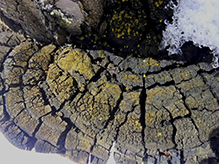 |
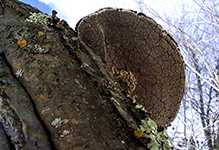 |
|
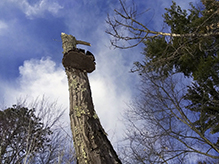 |
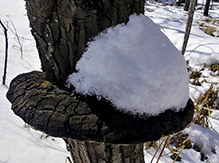 |
|
MinnesotaSeasons.com Photos |
||

Slideshows |
|

Visitor Videos |
||
Share your video of this fungus. |
||
This button not working for you? |
||
|
Other Videos |
||
|

Created: 4/5/2023 Last Updated: © MinnesotaSeasons.com. All rights reserved. |
